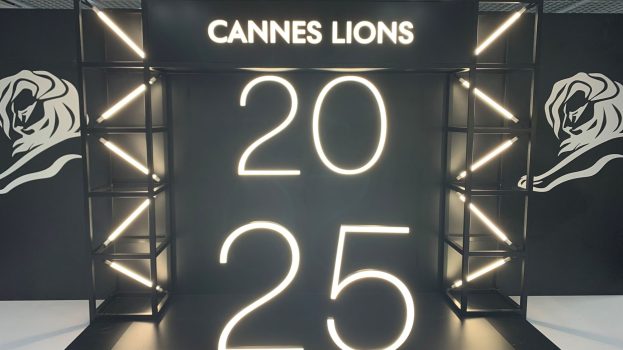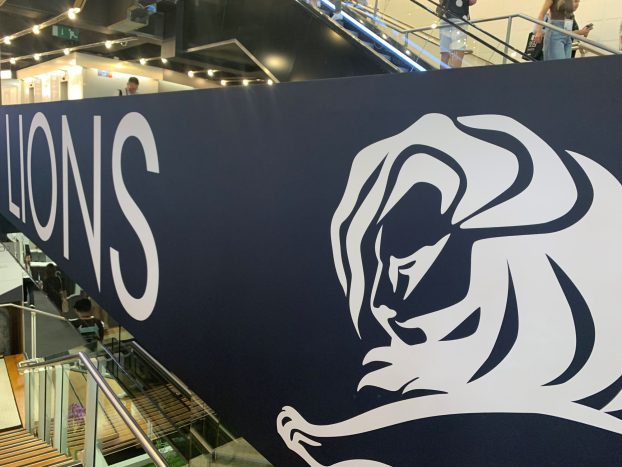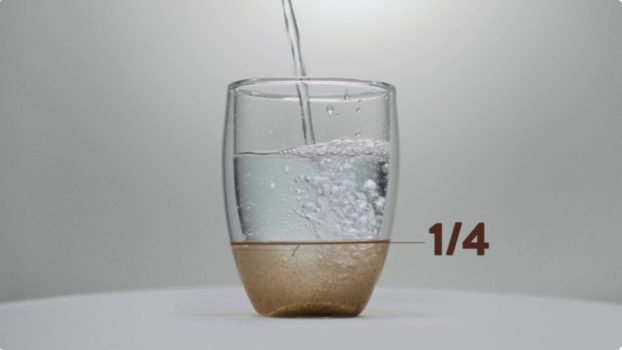Heaven knows there’s no shortage of awards in the Canadian marketing and advertising industry. But for a marketer, most of them are externally focused, agency-centric and limited to campaign categories. Strategy wanted to find out what marketers thought their best work was – when left to their own devices – and what qualities they’re looking to reward.
So, we checked in with some of Canada’s big CPG players to get a behind-the-red-carpet perspective on their internal marketing awards. These programs can help senior management identify future marketing leaders, boost morale and provide a way for employees in different divisions to appreciate each other’s work. And in companies with global reward programs, they also help to spread the word about innovative Canadian work to colleagues around the world.
Some of the awards are focused on business results and some are purely about creativity, and the prizes range from mere office glory to a trip to the Cannes Lions advertising festival to see what the global competition is up to. We got the scoop on three such programs – at Procter & Gamble Canada, Campbell Company of Canada and Pepsi-QTG Canada – and we found three different approaches.
P&G rewards with comedy and text messaging
Procter & Gamble Canada threw a gala shindig at downtown Toronto’s Revival nightclub in October to hand out its 10 annual Canadian Business Building Marketing Awards – three for individual excellence and seven for team executions. The company employs 100 marketers working on dozens of brands, including Tide, Pampers, Swiffer, Crest, Gillette, Pringles and Pantene. At the event, they all voted on the team awards, as did the 30 or so agency partners and senior staff members from P&G headquarters in Cincinnati who were in attendance.
The process for the P&G awards, now in their third year, began with the company’s six associate marketing directors nominating their best executions in the team categories.
‘Our objectives were to inspire, celebrate and reward the organization,’ explains Chris Laird, associate marketing director, fabric and home care, who helmed the awards process. ‘We identified all the executions we thought were deserving of recognition – we probably filtered through 60 or 70 across the categories – and had a big session where we rolled up our sleeves and whittled them down to three or four nominees per category.’
The shortlisted teams each had two months to collaborate with their agencies on a two-minute video that ‘brought the idea to life in a creative way,’ says Laird. At the gala, the videos were introduced by emcee Rajiv Satyal, who worked at P&G headquarters in Cincinnati before moving to L.A. to become a standup comic – and the crowd had two minutes to vote for their favourite entry via text messaging.
‘Some of the videos were extremely humourous and creative,’ says Laird, ‘and Rajiv is this awesome combination of a really funny guy who knows all the P&G lingo and all the inside jokes. So it’s a lot of fun, and a bit competitive because you’ve got the different brands and business units there.’
P&G’s awards are meant to be judged first and foremost on business results, specifically on share growth and ROI – although creativity is also taken into account, and with live voting influenced by the videos, the results can be somewhat unpredictable.
This year’s best initiative award, for the plan that demonstrated the most effective way of reaching the consumer, was won by Gillette 3X for a promotion that linked the brand, via a series of consumer events, to things that are important to its male professional target, including burlesque dancers, beer and cars. Best overall marketing plan, for best-in-class business results, was won by Herbal Essences Hair Care. And best first moment of truth, which means ‘sort of best in-store,’ according to Laird, was won by LCL Baby for a Pampers in-store marketing effort at Loblaws.
Best search-and-reapply is a new category, added this year ‘because of the importance of looking across the company globally to understand what other countries have done successfully, and reapply it in Canada.’ That was won by Tide Coldwater for the adaptation of a French campaign to the Canadian market. ‘The idea was basically that if everybody in France washed in cold water, they’d save enough energy to light up 2,000 villages,’ says Laird. ‘So they established a sustainability positioning, and the Canadian brand team took that and made it Canadian-specific, saying 2.5 million Canadian homes instead. They redid that idea in Canada with great success, so it was a great example of search-and-reapply.’
Laird says best commercial innovation is a crucial award. ‘We divide innovation into two parts,’ he explains. ‘One is product innovation, which is adding a new ingredient to a product and marketing it. And then there’s straight-out commercial innovation, where you take an existing product and basically go to market in a new way without any major changes. That’s a skill and a behaviour we want to reward in Canada. Often we don’t influence product design, so what’s in our control is how we actually go to market with a product. And we want to reward innovation there.’
The winner in that category was Look Fab, a campaign that marketed beauty care products from brands like Cover Girl, Pantene, Olay and Venus under one umbrella. The campaign’s most arresting innovation was the Look Fab Studio, a temporary ‘pop-up’ beauty-care destination that took over a storefront at the corner of Yonge and Bloor streets in Toronto for a month last spring, offering product sampling and tips from beauty experts like makeup artist Paul Venoit.
‘We took all the products at our disposal and all the equities on the packaging and said, ‘OK, how do we combine them and go to market in a unique way that leverages scale?” says Laird. ‘The Look Fab Studio was a big success, so that won in best commercial innovation, but there were some other cool ones – like Bounty, the paper towel brand, which marketed the select size in a whole new way. They restaged it around a waste and environmental message, and it was very successful.’
Best test-and-learn, which rewards a team that has built results by learning either from success or failure, went to Pantene Midnight Expressions hair colour. ‘It’s a specific hair care line for Asian women,’ says Laird. ‘Canada was a key test and learn market because of the predominance of Asians here, and they did a great learning plan around that.’
The final team award, for best turnaround of an underperforming brand, went to Braun male grooming for work that, Laird says, turned a declining number three brand into a growing number two brand by changing the target. ‘That led to a change in media buying and more focused in-store plans, which led to the breakthrough.
‘That one’s based on solid marketing fundamentals,’ he adds, ‘figuring out your issues, understanding your target consumer, figuring out the right communication and going to market in a new way.’
The three individual awards, given for marketing capability (to Judi Hoffman, for Look Fab), agency partner (to BCP, P&G’s longtime Quebec media agency, for its work with Star Académie, Destination Tendance and Pampers Showmercials) and P&G renegade (to Carlos Quintero, for leading the Gillette 3X launch and constantly testing new vehicles and programs), were decided on by a nine-member team of senior marketers.
‘The winners just get the glory and a statue, but it’s a pretty big deal,’ says Laird. ‘It’s really our one shot a year to get the whole marketing organization together outside of the typical training sessions and celebrate the great work that’s been done. P&G has also had a couple of years of great business results, so it was an opportunity to celebrate that as well.’
It’s also a good way to reward Canadian marketing innovation in a company where product innovation usually comes from the U.S. ‘That’s why we added categories like best search and reapply,’ says Laird. ‘We wanted to reward brand teams that use their resources wisely, i.e., they don’t necessarily create everything from scratch and look at the best ideas globally, because most of our brands are in countries around the world.’
P&G also has a global brand-building award, which Laird says he plans to integrate into the Canadian program in the future.
‘The vision is that the regional awards will feed into the global program, or at least there’ll be some kind of synergy,’ he says. ‘It’s a big company that can at times be siloed, and the awards are a great way to share and reapply and get everybody’s creative juices going.’
Campbell takes creativity to Cannes
At its first annual marketing awards, a red-carpet affair held at Toronto’s Pantages Theatre last March, Campbell Canada chose to reward the creative aspect of marketing first and foremost, in keeping with its premiere position among the company’s six core values: creativity, community, competition, collaboration, courage and can-do. They even call them the Marketing Creativity Awards.
‘We felt as a marketing leadership team that the creativity value was the one we ought to hold in high esteem and pursue,’ explains VP marketing Mark Childs. ‘The creativity value slogan is: ‘We dare to be different and we are naturally curious. We use our imagination and intuition to create possibilities in a fun and inspiring way.’ That is something that everybody in the whole Campbell Canada organization has exposure to and lives by.’
Campbell uses the Cannes Lions international advertising festival as a template for its awards, which are divided into film, press/outdoor, media, promo, cyber and design categories. The winners of each category qualify for the best-of-show Grand Prix, as well as an optional Titanium award for a ‘big idea’ that transcends the six categories. Most enticingly for Campbell marketers, the Cannes connection extends to the ultimate prize of a trip to the festival for the two-person Grand Prix-winning team.
The company’s 24 marketers, who work on brands like Habitant, Prego and V8 as well as Campbell’s Soup, submit their own entries for the contest, and may include their agency partners and/or other Campbell employees who have contributed to the effort in their submissions. They’re evaluated by an eight-member panel consisting of Childs, Campbell Canada president Philip Donne and agency partner leads including judging chair Jack Neary of BBDO, a past Cannes judge.
‘We decided that 70% of the rating had to be informed by how the work dared to be different, how the work was inspired and how the work created a new opportunity for us in the marketplace,’ says Childs. ‘For the other 30% of the rating – and this was obviously somewhat subjective – we asked the teams to demonstrate individually or as a team either natural curiosity or intuition. We did say quite explicitly that results were not mandated. We didn’t say not to put them in, but we wanted to be provocative and inspire the team to think about the art as much as the science of marketing.’
The big winner in 2007, out of 27 submissions, was the ‘Shadows’ ad campaign for Soup at Hand, which consisted of 15-second commercials for Campbell’s new microwaveable on-the-go soup varieties.
‘The commercials shared the news of the new varieties by using hand shadows, and we thought that was very inspired,’ says Childs. ‘It certainly dared to be different in soup and, we thought, in food; it helped us create a new opportunity in the marketplace; and there was clearly a healthy dose of intuition brought to the table in that it was not what you would normally expect from us as an organization. The idea linked to the fact that this is the only soup you can eat with your hands, and we thought that was a wonderful celebration of the creativity award.’
Childs says that the atmosphere at the Cannes Lions festival was what actually inspired him to create the awards program for Campbell Canada. ‘I had the opportunity to go to Cannes two years ago with Phil Donne,’ he says. ‘At Cannes one gets incredibly inspired, and we put one and one together and got two. I heard from the marketing team that we really didn’t have a marketing-dedicated recognition program, and so there was clearly an opportunity.
‘I think what’s wonderful about being able to take two folks to Cannes is that it really is a place to be inspired,’ he adds. ‘Cannes is one of those agency secrets that clients don’t often have the opportunity to experience but, I argue, should. We wanted to extend the opportunity to our team to be inspired, and to take time out to look at work that isn’t just our work.’
Campbell also has a global recognition program, called the Extraordinary Performance Awards, and at the most recent edition, held at the company’s international headquarters in Camden, NJ., in November, Campbell Canada brought home four awards.
‘That program recognizes delivery in the marketplace, so it’s more results-oriented,’ says Childs. ‘It’s probably the pinnacle of recognition within the broader organization. It also fosters an environment of sharing ideas and creating connections around our global network, which is wonderful for motivation and retention within our teams.’
And it provides a balance against the creative orientation of Campbell Canada’s program.
‘We have a mission that is about inspiring, provoking and delivering consumer ideas, and we’re really passionate about that,’ says Childs. ‘I think what’s most important about our awards is that they inspire more creative thinking and ultimately better ideas.’
Pepsi’s decade-old program celebrates collaboration
Pepsi-QTG Canada, which includes Quaker, Tropicana and Gatorade as well as Frito Lay and Pepsi among its brands, has been handing out its annual marketing awards for 10 years now. Seven years ago, the company decided to incorporate the awards ceremony into its national marketing conference, which this year takes place Jan. 28 to 30, and make a big night of it.
‘It’s a three-day conference,’ explains Dale Hooper, VP marketing, Pepsi-QTG Canada. ‘We bring in speakers and invite our agency partners, and on the first night we have our annual marketing awards. It’s a fun night, and it allows people to get to know each other better. The last couple of years it’s been in Niagara Falls, but this year we’re going to the Kingbridge Centre in King City, Ont. We invite our agency partners to the awards part, plus senior people from [parent company] PepsiCo in the U.S., so there are probably about 150 at that ceremony, and everyone really enjoys it.’
The awards, which are stone tablets, are divided into three sections: creative, media innovation and results-oriented. Every piece of creative produced by Pepsi-QTG’s 85 marketers is nominated for the two creative awards (TV and non-TV), and the marketers and their agency partners vote for the winners by paper ballot. The media innovation award is selected by the agency partners. And the results-oriented awards – best innovation, promotion, insight, the Power of One award, which rewards teamwork across divisions, and brand-building – are selected by Pepsi-QTG Canada’s five marketing VPs, led by Hooper.
‘The VPs get it down to three finalists, and then choose a winner,’ he says. ‘The big one is brand-building. It’s based on the last three years of results, so it’s not just a one-hit wonder. Last year it was won by the Quaker Chewy granola bar team. They had unbelievable three-year volume share and profit growth, and they did some great Canadian innovation, like moving the line to peanut-free before everyone else did.’
Doritos also had a good year, winning best innovation and TV creative for ‘Sweet Chili Heat,’ plus best media innovation for its Doritos 2Screen work with the Juno Awards.
‘The cool thing is that there are a lot of different elements to the awards,’ Hooper says. ‘There are the creativity awards that everyone votes on, and the awards that the marketing leadership team assesses based on results. And the Power of One award [won by the PHAM team for partnering with the NHL on efforts including ‘Bring Home the Stanley Cup’ and ‘Game On with Sidney Crosby’] is about collaboration – people doing things collectively to make our companies better places. Like the people who work on PepsiCo Brand College, which is our learning and training program. The marketing people who run that can get nominated for the great job they do. So it doesn’t just have to be great advertising work, it can be other things people are doing to make our teams better.’
This year’s nominees include Diet Pepsi, Gatorade and Tostitos for best brand-building, Doritos ‘Tandoori Sizzler’ for best TV creative and Sunchips’ ‘Start A Wave’ for best non-TV creative and best consumer promotion.
Canada is the only PepsiCo territory that holds its own internal marketing awards. Hooper, who recently moved to Pepsi-QTG from Frito Lay, thinks he’s the only person who’s been around for the awards’ 10-year run – and he’s seen them evolve over the years as the company has expanded from just Pepsi and Frito Lay to include Gatorade and Tropicana.
‘The impetus was to reward our work, to foster us working together, because there are so many divisions, and to foster an environment where great work is celebrated,’ he says. ‘Most of the awards are for Canadian initiatives, so if you’ve picked up an ad from the U.S., it doesn’t qualify. But we’ve created a new award for the best campaign, which might take elements from elsewhere but some parts are Canadian-led. In some cases, picking up the global creative may be the best solution.’
Hooper says the awards also serve as a morale-builder. ‘The best part is that we all get together and celebrate great work, and when people look around, they start to learn about each of the businesses and what type of work they’re doing,’ he says. ‘They see the innovation, and I think it helps them understand what the different options are, where else in the company they could go and work, for instance. We do a lot of fun marketing, and it’s a way for people to see how good we really are.’
And it works. In both 2002 and 2005 Frito Lay Canada won the Don M. Kendall
Co-Founders Award, a global PepsiCo program that rewards superior and consistent performance over a three-year period.























